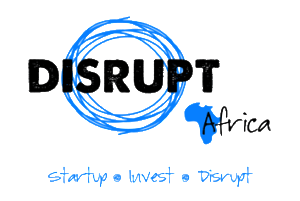Ripple’s XRP Ledger introduced the concept of validator-based consensus to enable faster finality and settlement. While its approach streamlined transaction speed, the design remained permissioned — validator participation is limited to trusted nodes on Ripple’s Unique Node List (UNL). This structure enables throughput but limits decentralization and cross-chain functionality.
Bitcoin Solaris draws on the core idea — but evolves it into a fully decentralized, trustless cross-chain integration system that extends Helios-powered validation across multiple blockchain environments. This is not a replication of XRP’s validator concept — it’s a progression. One that’s designed to support smart contract logic, multichain asset bridges, and native DeFi compatibility without relying on central coordination.
From XRP Inspiration to Helios Execution
XRP’s validator approach is effective for rapid settlement — but all nodes must agree within a closed, permissioned network. That keeps things fast but limits flexibility, especially when bridging to external chains.
Bitcoin Solaris’s architecture avoids this by distributing consensus across its two-layer system:
- The Base Layer handles BTC-S token transactions and record-keeping.
- The Solaris Layer manages smart contracts, dApps, and advanced integrations — including cross-chain protocols.
The network’s Helios Consensus Mechanism integrates Proof-of-Stake, Proof-of-Capacity, Proof-of-History, and Proof-of-Time. This combination gives Bitcoin Solaris a decentralized timestamping and validation layer that’s already capable of interacting with other chains — without trust assumptions.
This structure creates a blockchain that supports cross-chain bridges, liquidity synchronization, and wrapped assets — while preserving the security model that governs the native BTC-S supply.
Cross-Chain Tech Without Centralized Gatekeepers
What makes Bitcoin Solaris different from existing cross-chain platforms is that validator authority isn’t pre-assigned. There’s no need for a UNL or centralized registry. Instead, validators are selected based on stake, storage participation, and block history — metrics that exist entirely on-chain.
This opens the door to fully decentralized multichain applications. Developers can build:
- Trustless asset bridges
- Cross-chain lending markets
- Yield strategies across Layer-1 chains
- Wrapped BTC-S tokens for external use
Unlike XRP, where validators can be removed or reassigned by consensus governance, Helios allows Bitcoin Solaris to scale into multichain environments without sacrificing validator independence.
For a real-world walkthrough of how these mechanisms function and what makes Bitcoin Solaris different from XRP’s model, watch the breakdown from Crypto Nitro.
Powering It All: The Solaris Nova App
While the validator model handles consensus and messaging, users interact with this infrastructure through the Solaris Nova App. This mobile-first application will allow anyone to mine BTC-S tokens, participate in consensus, and interact with future cross-chain modules — directly from their phones.
Once the app is available, it will integrate real-time transaction data, mining functions, and cross-chain tools in a lightweight interface optimized for mainstream adoption.
To ensure transparency and security from the start, Bitcoin Solaris underwent full third-party verification. The smart contracts and protocol architecture have been independently audited by Cyberscope and Freshcoins, covering everything from consensus logic to token mechanics. Additionally, the core team has completed full KYC verification, reinforcing its long-term commitment to trust and accountability.
Phase 2 of the Bitcoin Solaris Presale Is Now Live
Bitcoin Solaris has a fixed supply of 21 million BTC-S tokens, of which 4.2 million (20%) are allocated for the presale. After a sold-out Phase 1, the project has now entered Phase 2, where tokens are priced at 2 USDT each.
There are no bonus tiers or early-access loops. Buyers in Phase 2 receive immediate wallet delivery of tokens — ready for staking, holding, or future cross-chain utility.
How to Join
1 — Visit bitcoinsolaris.com
Access the official presale dashboard and token info here.
2 — Connect a Solana-Compatible Wallet
Use Phantom, Solflare, or similar wallets to interact with BTC-S and manage your holdings.
3 — Buy BTC-S at 2 USDT per Token
This Phase 2 pricing is fixed. Tokens are sent to your wallet immediately upon confirmation.
4 — Prepare for Nova App Launch
When the app goes live, you’ll be able to mine and interact directly with cross-chain features from your phone.
5 — Hold, Stake, or Bridge
BTC-S can be staked, mined, or used in future bridge applications under development.
6 — Follow Community Updates
Get announcements, feature rollouts, and validator discussions via Telegram and X
XRP showed how validator networks could make chains faster. Bitcoin Solaris shows how that same concept — rebuilt for decentralization — can make chains work together.
Website: https://bitcoinsolaris.com/
X: https://x.com/BitcoinSolaris
Telegram: https://t.me/Bitcoinsolaris


